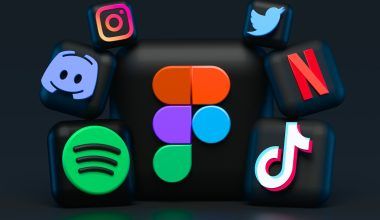If you’re an artist looking to make the most out of your music, knowing how to monetize your single on iTunes with 100% royalties is essential. iTunes has been a go-to platform for artists for years, offering a chance to connect with a global audience while retaining control over your music. In this guide, we’ll explore actionable steps to ensure you not only get your music on iTunes but also maximize your earnings while keeping 100% of your royalties. Let’s dive in and discover how you can turn your passion into profit.
Why Choose iTunes for Monetizing Your Music?
iTunes remains one of the most trusted platforms for music sales. Here’s why it stands out:
- Massive Reach: With millions of users globally, your single gets exposure to a large audience.
- Transparency: iTunes provides clear data on sales and performance, making it easy to track your earnings.
- Direct Revenue: Unlike streaming platforms, iTunes allows fans to purchase your single outright, giving you a higher revenue margin.
Choosing iTunes is an excellent first step, but there’s more to the process than just uploading your track. Let’s explore the steps to make it happen.
Steps to Monetize Your Single on iTunes with 100% Royalties
1. Prepare Your Music for Release
Before you monetize your single, ensure your track is ready for the world. High-quality production is key to making a good impression.
- Get Your Track Professionally Mixed and Mastered: This ensures your song sounds its best across all devices.
- Choose a Memorable Cover Art: Your cover art is the first thing listeners will see. Make it visually appealing and professional.
- Write an Engaging Description: A short, catchy description can entice potential buyers.
2. Choose the Right Distributor
To get your single on iTunes, you need a digital distributor. They act as the middleman between you and the platform.
- Top Choices for Independent Artists: Consider distributors like DistroKid, TuneCore, or CD Baby. They allow you to retain 100% royalties while offering useful tools to promote your music.
- Compare Fees: Some distributors charge a flat annual fee, while others take a small percentage of your earnings. Choose one that aligns with your budget and goals.
3. Set a Competitive Price
Pricing your single strategically can impact your sales. Here’s how to decide:
- Research Similar Artists: Check what other artists in your genre are charging.
- Consider Your Audience: If you’re new to the scene, a slightly lower price can encourage more sales.
- Experiment: You can always adjust the price based on performance and feedback.
4. Register Your Music for Royalties
To earn royalties, your song must be registered with a performing rights organization (PRO). This step ensures you’re paid when your music is purchased, streamed, or played publicly.
- Join a PRO: Organizations like ASCAP, BMI, or PRS for Music can help.
- Get an ISRC Code: This unique code tracks your song’s performance and is required for distribution.
5. Promote Your Single
Promotion is critical to getting your music noticed. Here’s how to build buzz:
- Social Media Campaigns: Share teasers, behind-the-scenes content, and links to your single across platforms like Instagram, Twitter, and TikTok.
- Email Marketing: Build an email list of fans and share exclusive updates about your release.
- Collaborate with Influencers: Partner with influencers who resonate with your audience to amplify your reach.
6. Engage with Your Fans
Fans are your greatest asset. Keep them involved throughout the process.
- Host Listening Parties: Virtual or in-person events can create excitement around your release.
- Ask for Feedback: Encourage fans to share their thoughts and reviews after purchasing your single.
- Offer Exclusive Perks: Consider bundling your single with merchandise or exclusive content.
7. Analyze Your Sales Performance
Once your single is live, regularly monitor its performance.
- Use Analytics Tools: Platforms like Apple Music for Artists provide insights into your sales and listener demographics.
- Identify Trends: Pay attention to which promotions drive the most sales and replicate them for future releases.
8. Reinvent and Repeat
Music is an ongoing journey. Use the lessons from this release to improve your next one.
- Engage in Continuous Learning: Stay updated on iTunes policies and trends in the music industry.
- Build Your Brand: Focus on creating a consistent image that resonates with your audience.
Benefits of Keeping 100% Royalties on iTunes
Retaining 100% royalties means you get to enjoy the full revenue from your hard work.
- Financial Independence: Every purchase directly supports your music career.
- Creative Freedom: With no label interference, you have complete control over your music.
- Long-Term Growth: The earnings can be reinvested into better equipment, marketing, or new projects.
Common Mistakes to Avoid
Avoid these pitfalls to ensure a smooth release:
- Skipping Quality Checks: A poorly produced track can harm your reputation.
- Neglecting Marketing: Even the best music needs promotion to reach the right audience.
- Overpricing: Be realistic about what your audience is willing to pay.
Tools and Resources for Monetizing Your Music
Here are some tools that can help you succeed:
- Music Distribution Platforms: DistroKid, TuneCore
- Analytics Tools: Apple Music for Artists, Chartmetric
- Promotion Services: Fiverr, SubmitHub
Conclusion
Monetizing your single on iTunes with 100% royalties is not just possible but highly rewarding. By preparing your music, choosing the right tools, and engaging with your audience, you can turn your passion into a sustainable career. Remember, the key is to stay consistent and keep learning. Now that you have the roadmap, it’s time to put it into action and let the world hear your music.
For further reading, explore these related articles:
For additional resources on music marketing and distribution, visit DMT Records Private Limited.






